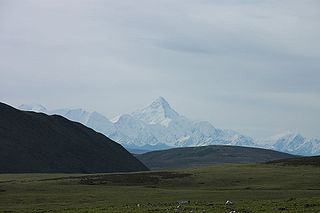The website of Arnold Arboretum at Harvard University includes a section entitled South Central China and Tibet: Hotspot of Diversity. This appellation applies to a region of extraordinary richness in endemic plant and animal species, and one whose ecosystem is threatened by the pressure of human activities.
Among the early 20th-century Western scientists to document the natural history of Sichuan and Yunnan provinces, as well as southwestern Gansu and eastern Tibet, was Joseph Rock (1884-1962). Born in Vienna, Austria, he emigrated to the U.S. in 1905. He moved to Hawaii in 1907 and became an authority on the flora of those islands while serving on the faculty of the University of Hawaii from 1911 until 1920. At this point, his life takes a turn for the truly adventurous.
Rock began his 27-year stint in Asia studying the botany of Burma, Thailand, and Assam. From 1924 until 1927, Harvard’s Arnold Arboretum and Museum of Comparative Zoology sponsored Rock on an expedition to collect bird and plant specimens, and photograph the landscape of Sichuan and Yunnan. Rock sent back to Harvard 20,000 herbarium specimens, over 1,000 bird specimens, hundreds of packets of seeds, 653 photos, and over 300 letters and telegrams.

Gongga Shan, also known as Minya Konka, the highest peak in Sichuan. Rock mistakenly believed it was the highest mountain in the world. Photo: Wikipedia.
After finishing the Harvard project, Rock remained in Sichuan, Yunnan, eastern Tibet, and southwestern Gansu until 1949, when he was driven out during the communist takeover. From his base near the city of Lijiang, Rock explored the mountain ranges, valleys and forests of this wild and pristine region of China. He traveled with an armed escort for protection against bandits and with a convoy of porters and servants who transported heavy photographic and plant-pressing equipment and attended to his rather eccentric standards of comfort. A full set of silverware, a table, a canvas bathtub from Abercrombie & Fitch (in which he took hot baths), and a hand-cranked phonograph with a collection of opera recordings counted among his “proper” trekking gear.
His expeditions not only produced a wealth of scientific data on southcentral and southwestern China, but also insight into social, cultural and political practices. Rock befriended the lama king of Muli, and took a special interest in the Naxi people. He wrote the two-volume Ancient Naxi Kingdom of Southwest China (published by Harvard University Press in 1948), and a Naxi-English dictionary. Ten articles by Joseph Rock, describing his expeditions in China, appeared in National Geographic Magazine from 1922 until 1935. If you can find these in your grandparents’ basement, they are a treasure trove of fascinating stories and photographs! His writings are said to have inspired James Hilton to create the novel Lost Horizon about a fictional Shangri-La hidden in a deep valley of the Himalaya.
After being airlifted out of China in 1949 in the face of the advancing communist army, Rock returned to Hawaii, where he died in 1962. Today’s adventure travelers say that elders in remote villages of Sichuan and Yunnan still remember the botanist. His role in divulging the natural and ethnic wonders of this isolated region to an international audience is certainly still acknowledged in the West.
If your interest is piqued by Rock’s colorful life in southwestern China’s “hotspot of diversity,” our Wild & Ancient China tour spends six days visiting Sichuan’s panda reserves and Jiuzhaigou National Park. Hot baths included!


























